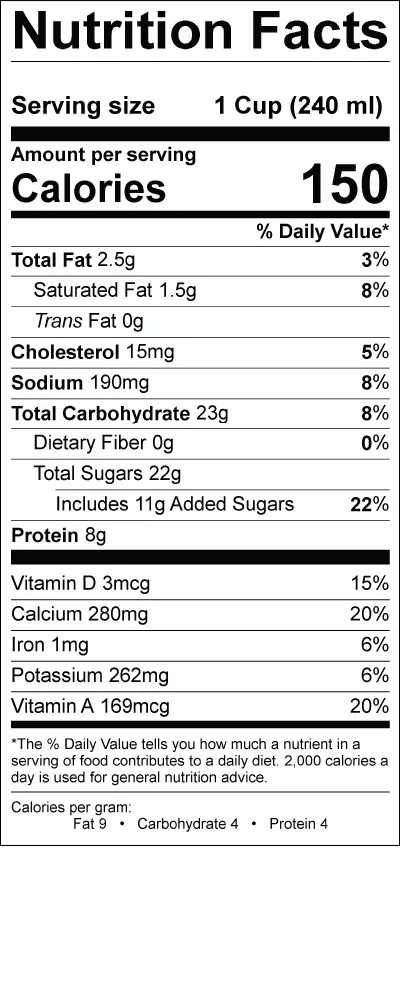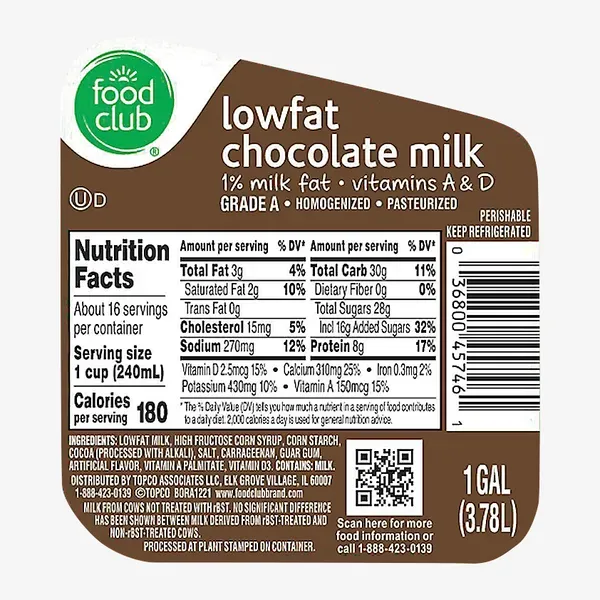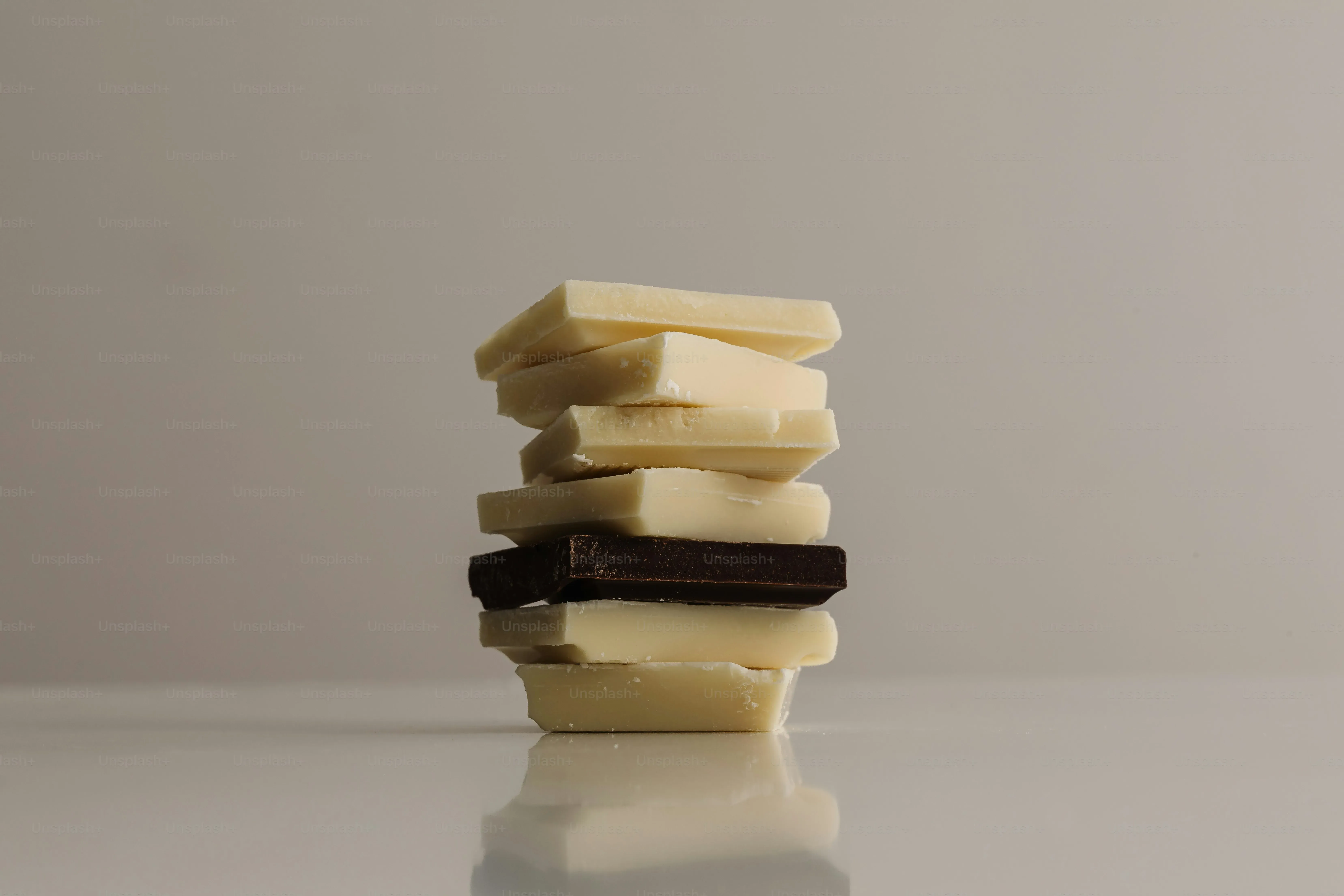Table of Contents
Remember that carton of chocolate milk in your lunchbox? For many, it was the highlight of the day, a sweet escape. But as adults, we start looking closer at what we consume. Suddenly, questions pop up: Is that childhood treat still okay? Specifically, what's the real story behind low fat chocolate milk nutrition facts?
Understanding Low Fat Chocolate Milk Nutrition Facts

Understanding Low Fat Chocolate Milk Nutrition Facts
Breaking Down the Basics
So, you grab that carton of low fat chocolate milk. What are you actually getting? Beyond the obvious milk and chocolate flavor, the label on low fat chocolate milk nutrition facts tells a specific story. It starts with milk, usually skim or 1%, meaning most of the fat is removed. Then comes the chocolate, which often means cocoa powder and a significant amount of added sugar. This mix gives you calcium, vitamin D (often fortified), protein, and typically a decent dose of carbohydrates, mostly from that added sugar. It’s not just milk with a little flavor; it's a processed beverage with a distinct nutritional profile.
Key Players in the Nutritional Lineup
Look closely at the low fat chocolate milk nutrition facts, and a few numbers jump out. Protein is a big one, thanks to the milk base, which is great for muscle repair. Calcium and Vitamin D are also highlights, crucial for bone health – something plain milk is known for. However, the sugar content is where things get interesting, and often, concerning. A single serving can pack as much added sugar as a candy bar, completely changing the game from a simple dairy drink to something closer to a sugary soda, albeit one with some redeeming nutritional qualities.
Think about it: you're getting bone-building nutrients, but you're also getting a sugar rush. It's a trade-off, and whether that trade is worth it depends heavily on the rest of your diet and activity level.
Nutrient (Typical per 1 cup) | Amount | Why it Matters |
|---|---|---|
Calories | 150-180 | Energy content |
Total Fat | 0-2g | Low compared to whole milk |
Added Sugar | 10-20g | Significant source of empty calories |
Protein | 8g | Muscle repair and satiety |
Calcium | ~30% DV | Bone health |
Vitamin D | ~25% DV | Bone health, immune function |
Added Sugar: The Elephant in the Room
Let's not sugarcoat it – the added sugar is the most debated part of low fat chocolate milk nutrition facts. Manufacturers dump it in to make it palatable, to give it that sweet, comforting taste we remember. This isn't the natural sugar found in milk (lactose); this is extra stuff – sucrose, high fructose corn syrup, whatever gets the job done cheaply and effectively. This added sugar contributes calories without much nutritional value and can contribute to health issues if consumed in excess regularly. It’s the primary reason low fat chocolate milk isn't simply a health drink despite its milk base.
Comparing Low Fat Chocolate Milk Nutrition Facts to Other Drinks

Comparing Low Fat Chocolate Milk Nutrition Facts to Other Drinks
Low Fat Chocolate Milk vs. Sugary Sodas and Juices
so you've seen the low fat chocolate milk nutrition facts. Now, how does it stack up against the usual suspects people grab when they want something sweet? Think soda or fruit juice. Right off the bat, low fat chocolate milk has a leg up because it contains actual nutrients like protein, calcium, and vitamin D from the milk base. A can of soda? Empty calories, pure and simple – mostly high-fructose corn syrup and coloring. Fruit juice, while sounding healthy, is often just concentrated sugar water with minimal fiber compared to whole fruit. So, in a direct comparison for nutritional substance beyond just sugar, low fat chocolate milk clearly wins. It delivers some building blocks your body can actually use, unlike the nutritional void of many other sweet drinks.
Comparing to Plain Milk and Sports Drinks
Now, let's look at plain milk or a typical sports drink. Plain skim or 1% milk offers similar protein, calcium, and vitamin D as the chocolate version, but without the boatload of added sugar. From a pure health standpoint, plain milk is often the better choice if you're just looking for dairy benefits without the extra calories and sugar hit. Sports drinks? They're designed for specific purposes, usually electrolyte replenishment during intense, prolonged exercise. They contain sugar for quick energy and electrolytes like sodium and potassium. While some athletes use chocolate milk for recovery (it has carbs and protein), a standard sports drink doesn't offer the same protein or calcium profile, and their sugar content can be comparable or even higher depending on the brand. It depends entirely on your goal: basic nutrition vs. specific rehydration/energy during activity.
So, where does low fat chocolate milk really fit?
- More nutrient-dense than soda or juice.
- Higher in sugar than plain milk.
- Offers protein and calcium that sports drinks lack.
- Provides carbs and protein useful for post-exercise recovery.
Making the Choice Based on Low Fat Chocolate Milk Nutrition Facts
Understanding low fat chocolate milk nutrition facts means making an informed decision based on your needs. If you're choosing between this and a sugary soda, the chocolate milk offers more nutritional upside. If you're choosing between this and plain milk for daily consumption without high activity, the added sugar in the chocolate version is a significant drawback. For post-workout recovery, it can be a convenient option that provides both carbs and protein, a combination many athletes seek. The key is recognizing it's not a magic health drink, but a flavored beverage with a specific nutritional makeup that can serve a purpose depending on the context of your diet and activity level. Don't just drink it because it tastes good; understand what you're consuming.
The Pros and Cons of Low Fat Chocolate Milk Nutrition Facts

The Pros and Cons of Low Fat Chocolate Milk Nutrition Facts
The Upside: More Than Just Sugar Water?
Alright, let's look at the good stuff in low fat chocolate milk nutrition facts. It’s not all bad news, despite the sugar. You're getting a solid hit of protein, usually around 8 grams per cup, which is crucial for building and repairing muscle tissue. This is why you see it pop up as a recommended recovery drink for athletes – it provides both protein and carbs needed after a tough workout. Plus, you get the bone-building duo: calcium and vitamin D. Most milk is fortified with D, and milk is naturally loaded with calcium. If you struggle to get enough dairy or these specific nutrients elsewhere, this can be a convenient, albeit sugary, way to boost your intake. It’s definitely a step up from, say, a gummy bear.
The Downside: Sugar, Sugar, and More Sugar
Now for the less appealing side of low fat chocolate milk nutrition facts: the sugar. This is the primary reason it gets a bad rap. We're talking about significant amounts of added sugar – often 10-20 grams per serving. That’s on top of the natural lactose in milk. Regularly downing drinks high in added sugar contributes to excess calorie intake, which can lead to weight gain, increased risk of type 2 diabetes, and other metabolic issues. It’s essentially empty calories that taste good but don’t provide much in the way of vitamins or fiber. So, while you get protein and calcium, you’re paying a price in sugar. It's like getting a free car but it only runs on expensive, hard-to-find fuel.
Here's a quick reality check on that added sugar:
- Often equals or exceeds the sugar in a standard soda.
- Contributes empty calories, not essential nutrients.
- Can lead to blood sugar spikes and crashes.
- Adds up quickly if consumed regularly.
Weighing the Trade-offs in Low Fat Chocolate Milk Nutrition Facts
So, where does that leave us with low fat chocolate milk nutrition facts? It’s a classic case of balancing benefits and drawbacks. It offers valuable protein, calcium, and vitamin D from its milk base, making it more nutrient-dense than pure sugar drinks. However, the substantial amount of added sugar cannot be ignored. If you're an athlete needing quick recovery fuel, the carb-protein combo might be beneficial in that specific context. For everyday hydration or a casual drink, plain water or plain milk is likely a much better choice due to the sugar load in the chocolate version. It's not poison, but it's certainly not a health elixir either. Think of it as an occasional treat or a very specific recovery tool, not a daily staple.
Are you drinking it because you genuinely need the recovery boost, or just because you miss that childhood flavor?
Making Sense of Low Fat Chocolate Milk Nutrition Facts for Your Diet

Making Sense of Low Fat Chocolate Milk Nutrition Facts for Your Diet
Fitting It Into Your Plate (or Cup)
So, how do you actually use low fat chocolate milk nutrition facts to make smart choices about including it in your diet? It boils down to context and quantity. If you're sedentary and trying to cut down on sugar, a daily carton is probably a bad idea; those added sugars pile up fast, contributing to calorie surplus without much payoff beyond taste. However, if you've just finished a grueling workout – say, an hour-long run or a heavy lifting session – the quick carbs and protein can be an efficient recovery fuel, helping refuel glycogen stores and kickstart muscle repair. It’s not magic, but it serves a practical purpose in that specific scenario. The key is to view it as a functional recovery drink or an infrequent treat, not a beverage to sip throughout the day like water or plain milk.
The Final Sip on Low Fat Chocolate Milk Nutrition Facts
So, where do we land on low fat chocolate milk nutrition facts? It's not the nutritional villain some make it out to be, offering valuable protein and calcium. However, the added sugar is a undeniable factor that needs consideration, especially if you're watching your intake. Compared to plain milk, it adds calories and sugar without a significant boost in essential nutrients, aside from perhaps making it more palatable for some. Ultimately, whether it fits into your diet depends on your overall eating pattern and activity level. It can be a reasonable choice for recovery after intense exercise or an occasional treat, but relying on it as a primary beverage might mean you're drinking more sugar than you intend. Check the label, understand the trade-offs, and decide if those low fat chocolate milk nutrition facts align with your health goals.
